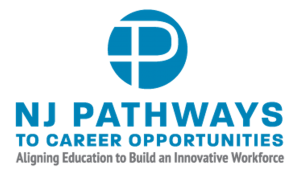Centers of Workforce Innovation
CENTERS OF WORKFORCE INNOVATION (CWI), focused on 10 career areas, will build pathways with aligned curriculum shared across educational partners to serve the learning lifespan of students and workers.
Centers of Workforce Innovation Overview
Each of the ten Centers of Workforce Innovation will have education and training partners, including 2 to 5 Community College partners along with other education institutions from high schools to four-year colleges and universities across the state.
The 10 Centers of Workforce Innovation will:
- Develop new aligned and improve existing curriculum from High Schools to Community Colleges to 4-Yr Colleges / Universities
- Priority given to industry-valued credentials embedded in credit programs
- Share curriculum and provide professional development for Faculty / Teachers
- Develop transfer agreements (dual enrollment between HS & CC, 1+1 among CCs, and 2+2 and 3+1 between CCs and 4-year institutions)
- Pilot Prior Learning Assessments Solutions
- Pilots of training/education consisting of non-credit programs connected to credit pathways, dual enrollment programs on a pathway, and incumbent worker training
- Year-End Performance Reports
Each Center will promote the use of Community College Opportunity Grants and other state and federal financial aid to support movement along pathways including for incumbent workers, and will promote the expansion of Apprenticeship and other work-based learning opportunities for students.
- Develop new curriculum and strengthen existing curriculum aligned with the needs of employers. Curriculum efforts will span the education continuum and will include high school, community college (credit and non-credit), and four-year colleges and universities, and will promote the movement of students along pathways. Priority will be given to curriculum that results in industry-valued credentials.
- Be informed by Industry Action Teams that will ensure that the Centers are driven by the needs of employers.
- Share curriculum widely to other education institutions across the state and will provide professional development for faculty and teachers.
- Develop agreements and partnerships to support pathways including dual enrollment programs between high schools and colleges, 1+1 partnerships between community colleges, and 2+2 and 3+1 agreements between community colleges and four-year colleges and universities.
- Develop Prior Learning Assessment
- Pilot the delivery of training and education programs.



